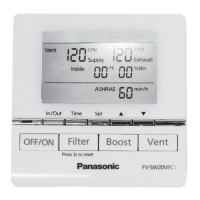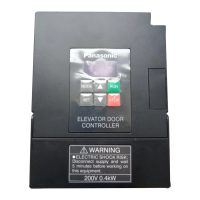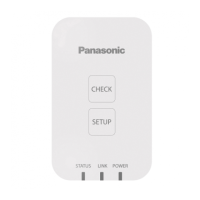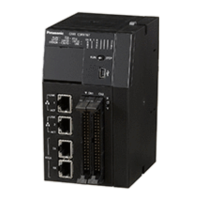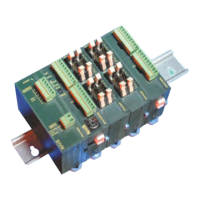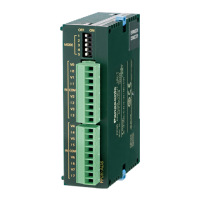15 © Panasonic Industrial Devices SUNX Co., Ltd. 2016
Functional Descriptions
Muting input conditions
Ɣ The order for inputting the muting input A and B, which the muting function activates, can be set.
$ E(IIHFWLYHHYHQHLWKHUFRPHV¿UVW
$E(IIHFWLYHRQO\ZKHQWKHLQSXW$FRPHV¿UVW
E$(IIHFWLYHRQO\ZKHQWKHLQSXW%FRPHV¿UVW
Note: The setting is possible for each channel.
Setting of the muting lamp diagnosis function (Ver. 2 or later)
Ɣ The muting lamp diagnosis function can be set to “effective / ineffective.” (Note)
The factory setting of this function is effective.
ON : The muting lamp diagnosis function is effective.
OFF : The muting lamp diagnosis function is ineffective.
Note: If the muting lamp diagnosis function is set to ineffective, the muting function is maintained even if the lamp blew.
Muting sensor output operation setting (Ver. 2.1 only)
Ɣ Output operation of the muting sensor can be selected.
The factory setting is NONO (Normally Open, Normally Open).
NONO (Normally Open, Normally Open)
A muting sensor which is to be connected to the muting input A (ON with light non-received sta-
tus, ON with object approaching status and ON with object contacted status)
A muting sensor which is to be connected to the muting input B (ON with light non-received sta-
tus, ON with object approaching status and ON with object contacted status)
NONC (Normally Open, Normally Closed)
A muting sensor which is to be connected to the muting input A (ON with light non-received sta-
tus, ON with object approaching status and ON with object contacted status)
A muting sensor which is to be connected to the muting input B (ON with light received status,
ON with object non-approaching status and ON with object non-contacted status)
3-1-7 Interlock Setting Changing Function
One condition can be selected from the following three interlock conditions. It can be set to invalid,
too. (Mode 3)
Start / Restart interlock (Mode 0)
The SF4B / SF4B<V2> series goes into interlock condition after the power is ON and when it is
in the light receiving condition.
The factory setting is Start / Restart interlock.
Start interlock (Mode 1)
The SF4B / SF4B<V2> series goes into interlock condition only when the power is ON. Once
the SF4B / SF4B<V2> series is reset, it does not go into interlock condition again.
Restart interlock (Mode 2)
The SF4B / SF4B<V2> series does not go into the interlock condition when the power is ON.
The SF4B / SF4B<V2> series goes into interlock condition only when the SF4B / SF4B<V2>
series receives the light, after the power is ON, the control output (OSSD 1 / 2) is turned into
ON once and then the SF4B / SF4B<V2> series is blocked.
3-1-8 External Device Monitor Setting Changing Function
The setting of the external device monitor can be changed.
1. Allowable period of the response time: 100 to 600ms (unit of 10ms)
The factory setting is 300ms.
2. “Effective / ineffective” of the external device monitor function can be selected.
The factory setting is “effective.”
Ramco Innovations
800
280-6933 www.PanasonicSensors.com

